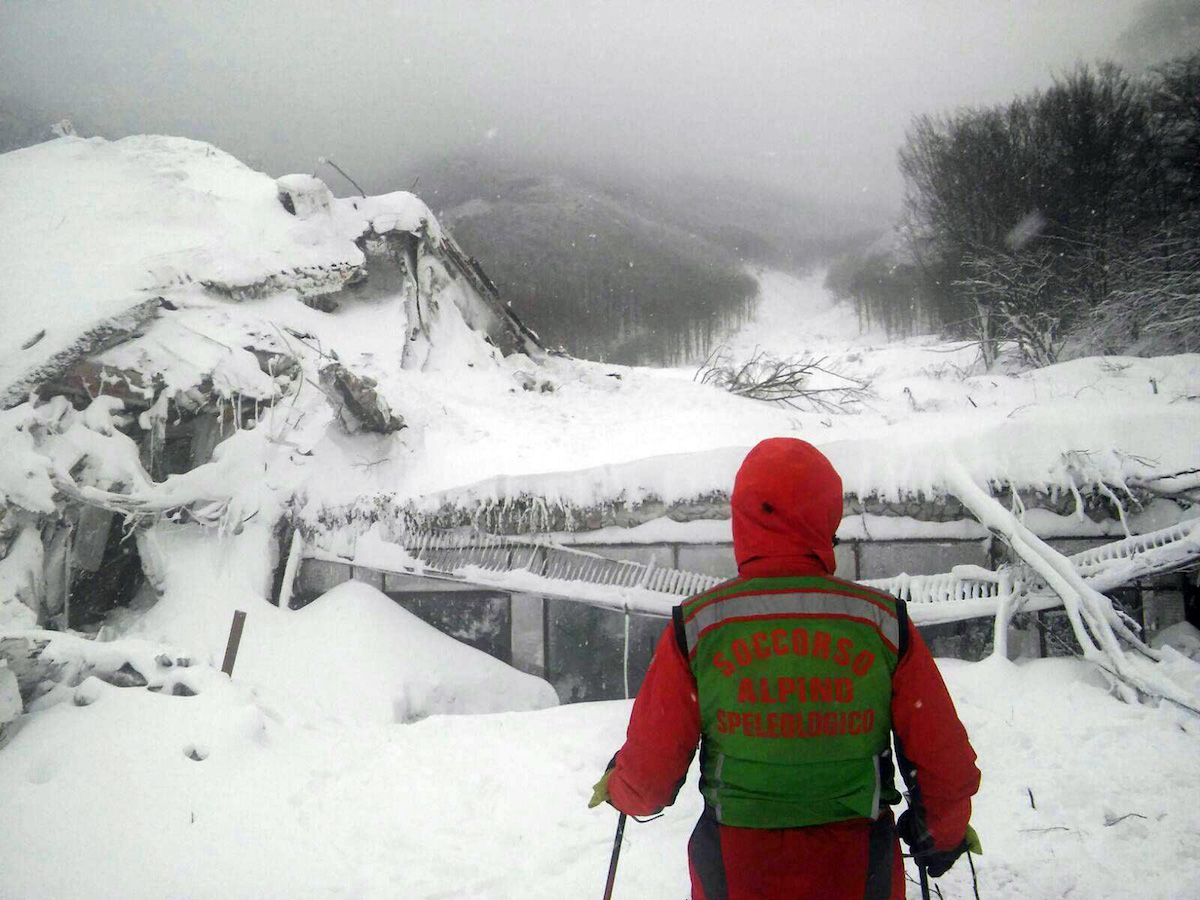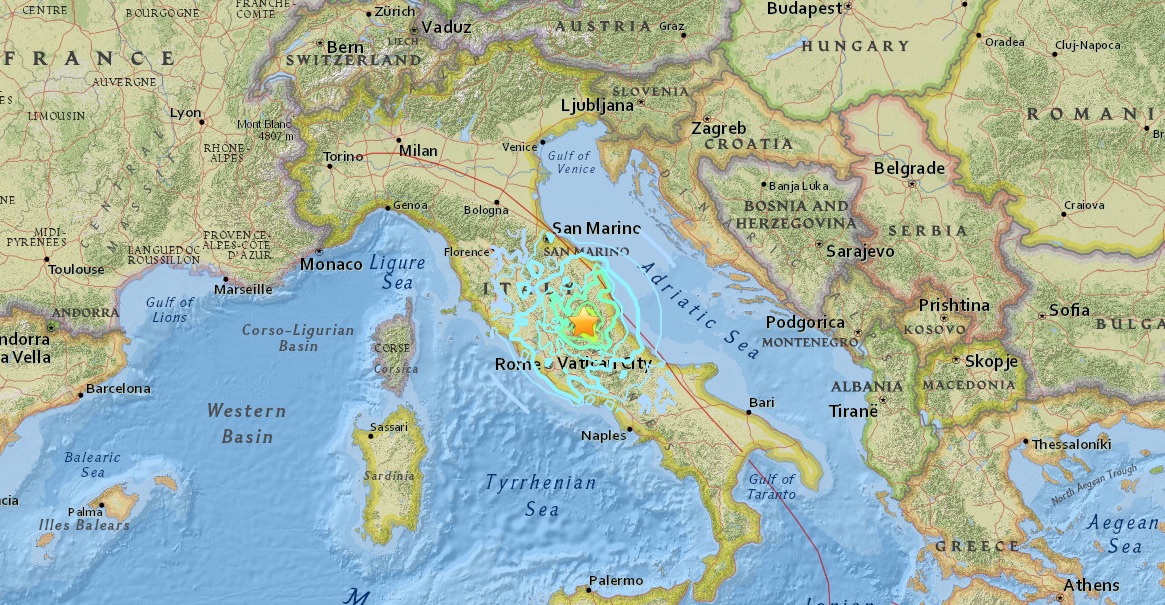Earthquakes or Snowstorms? Cause of Italy's Deadly Avalanche Debated

It's not yet clear what caused a deadly avalanche in Italy on Wednesday (Jan. 18), but experts said it's too soon to blame the cataclysm on a series of substantial earthquakes that happened earlier that day.
It's common knowledge among avalanche scientists that large earthquakes can trigger avalanches, but the quakes and avalanches usually happen simultaneously or within moments of one another, said Jordy Hendrikx, the director of the Snow and Avalanche Laboratory at Montana State University.
In contrast, the Italy avalanche may have happened up to 2 hours after the last major earthquake, according to news reports. [The 10 Biggest Earthquakes in History]
It's unlikely that a magnitude-5.1 earthquake, the last substantial earthquake to rock the region, triggered the avalanche 2 hours later, Hendrikx said. It's more feasible that the region's heavy snowfall is entirely to blame, he added.

It's likely "just a coincidence that this occurred on the same afternoon — and therefore hampered rescue efforts," Hendrikx told Live Science. "Based on this, I would suggest that the avalanche should be framed in terms of the recent snow storm rather than as an earthquake-induced event."
Details are still emerging about the avalanche that buried Hotel Rigopiano, a resort where 34 people were staying on Wednesday. That day, a total of six earthquakes, ranging in magnitude from 4.1 to 5.6, shook central Italy, according to the U.S. National Earthquake Information Center.
In addition, the region had received heavy snowfall — of about 3 feet (90 centimeters) — over the past few days, according to news reports.
Sign up for the Live Science daily newsletter now
Get the world’s most fascinating discoveries delivered straight to your inbox.
Dozens of people are still missing, but rescue efforts are ongoing, news reports said.
Avalanche threat
The most common type of avalanche, a slab avalanche, needs at least three ingredients. The so-called "slab" is a layer of snow that sits on top of a weak layer, for instance, a thin layer of frost that makes a smooth sliding surface. This can happen if a new layer of snow falls on an older, slightly frozen snowy crust, Hendrikx said.
Second, a slope of at least 30 degrees is needed, which allows the avalanche to move downward. And third, a trigger, such as an explosion, an earthquake or even a person skiing nearby, is needed to set off the avalanche, Hendrikx said.
Large earthquakes have set off avalanches in the past. For example, avalanches followed the 7.1-magnitude New Zealand earthquake in 2010, the 7.8-magnitude Peru earthquake in 1970 and the 9.2-magnitude Alaska earthquake in 1964, according to a 2010 piece Hendrikx co-wrote for The Avalanche Review journal.
But the long gap in time between the last substantial earthquake in central Italy and the avalanche suggests the new, thick layer of snow is to blame, Hendrikx said. That snow may have caused instability that either led to or contributed to the avalanche, he said.
However, the avalanche's timing doesn't completely exonerate the earthquakes, said Dieter Issler, a senior physicist at the Norwegian Geotechnical Institute. An earthquake (or earthquakes) could have induced a rupture in the snowpack's weak layer, so that it was "just at the limit between stability and instability," Issler told Live Science.
Over time, that rupture could have grown until it reached a critical size, making collapse imminent, he said.
Central Italy is no stranger to powerful earthquakes. In October, a 6.2-magnitude earthquake hit the area, but no fatalities were reported. However, a 6.3-magnitude earthquake in 2009 left more than 300 people dead, Live Science previously reported.
Original article on Live Science.

Laura is the archaeology and Life's Little Mysteries editor at Live Science. She also reports on general science, including paleontology. Her work has appeared in The New York Times, Scholastic, Popular Science and Spectrum, a site on autism research. She has won multiple awards from the Society of Professional Journalists and the Washington Newspaper Publishers Association for her reporting at a weekly newspaper near Seattle. Laura holds a bachelor's degree in English literature and psychology from Washington University in St. Louis and a master's degree in science writing from NYU.









